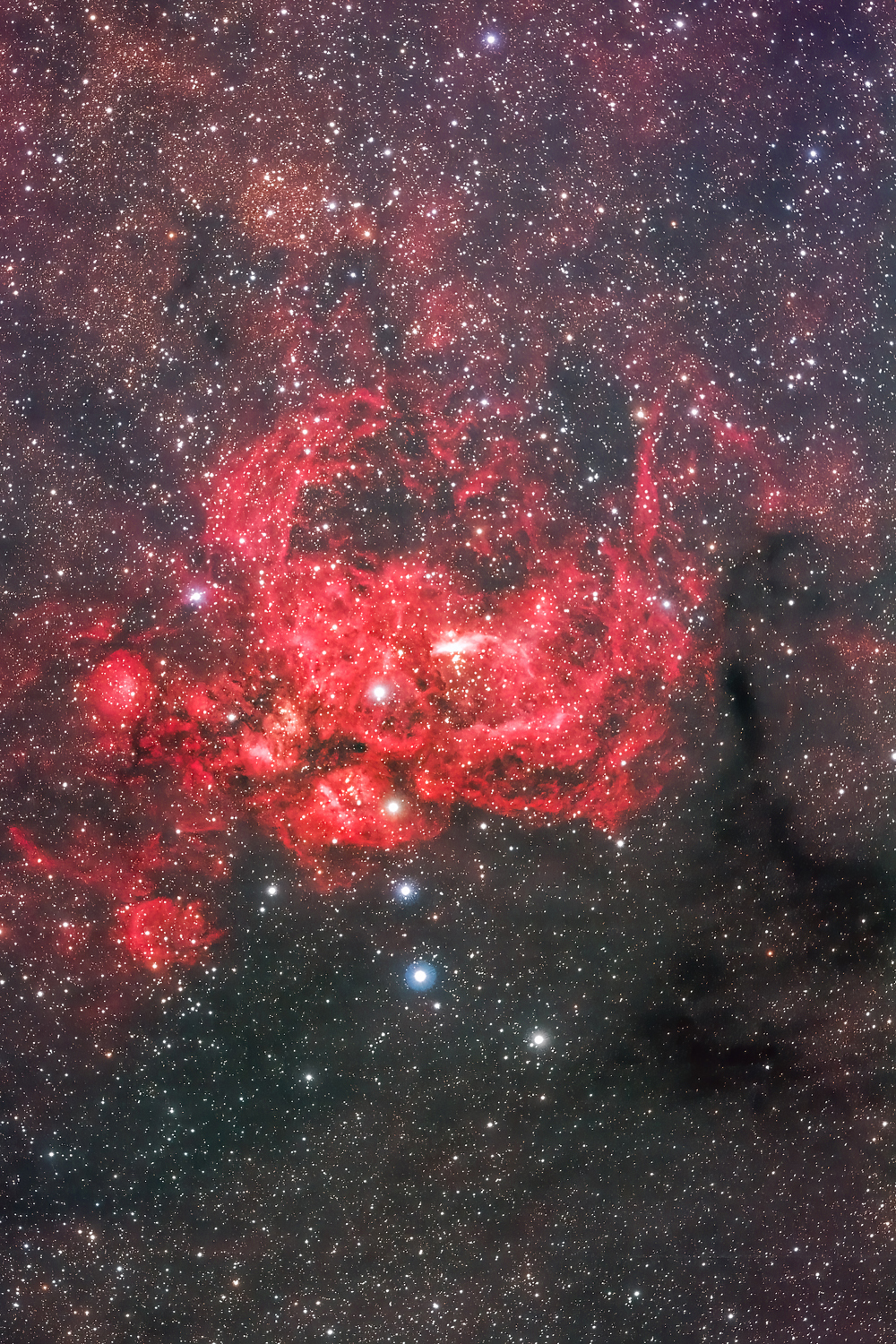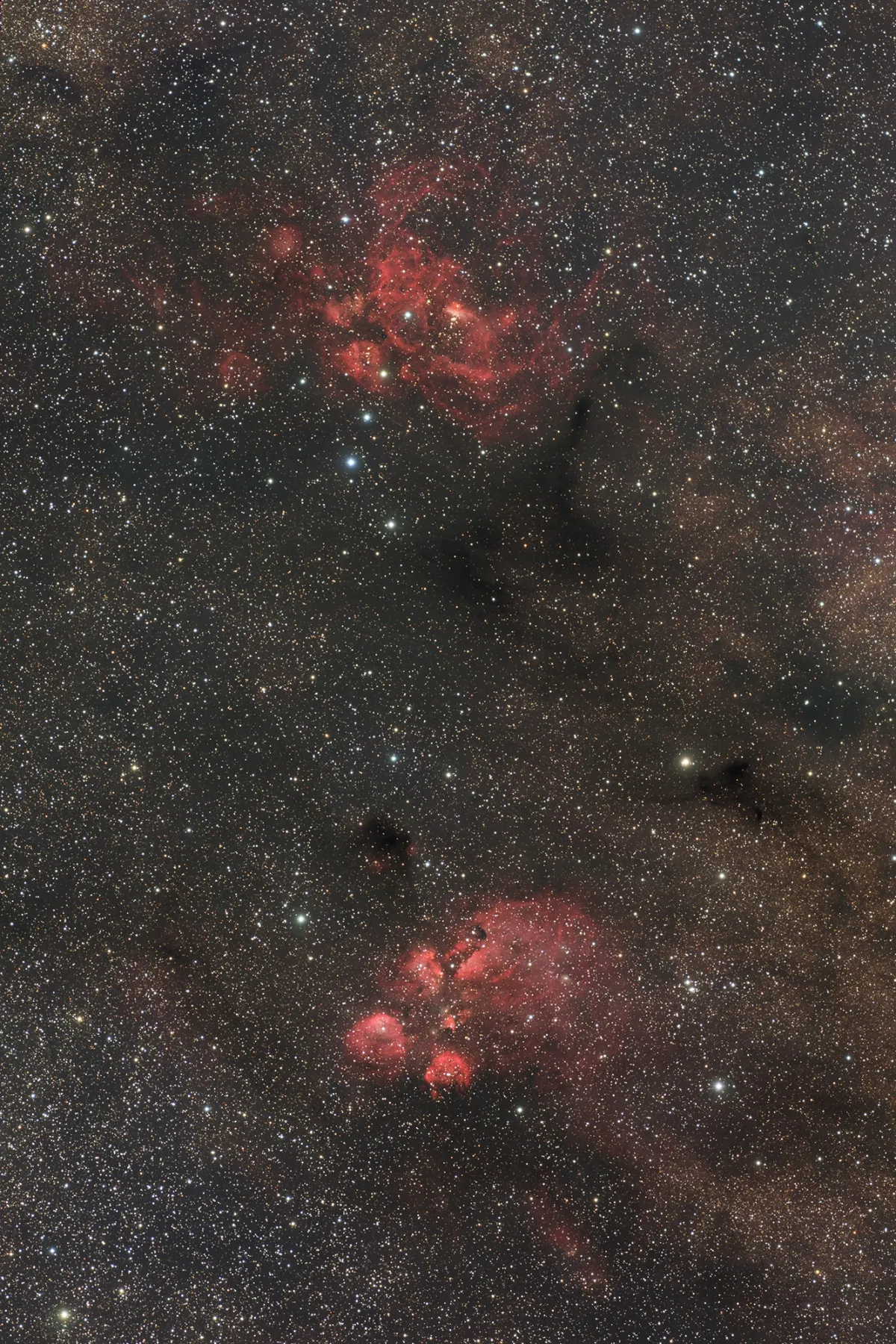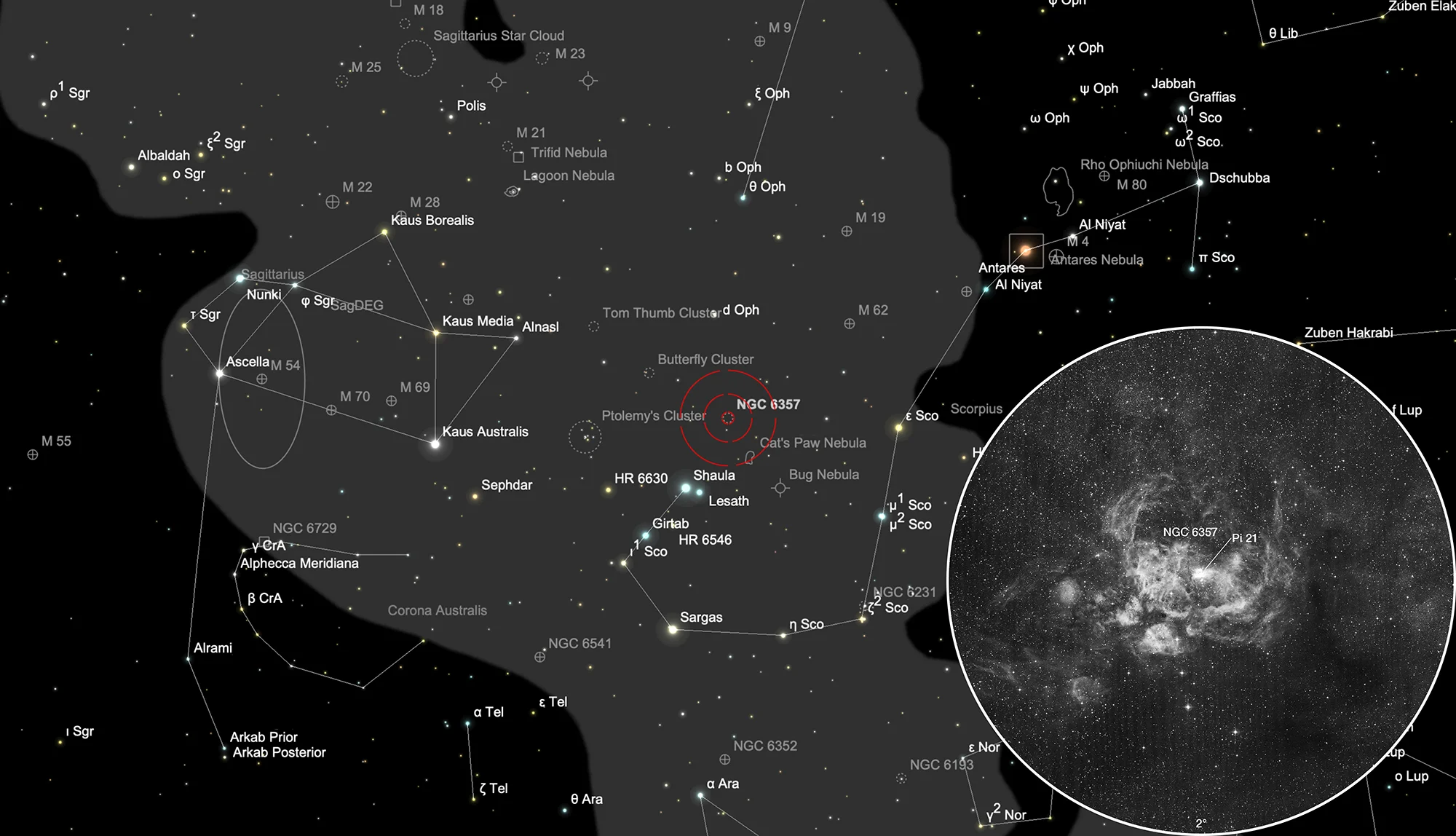Lobster Nebula (NGC 6357)


History
The nebula was discovered by John Herschel on 8 June 1837, when he was in South Africa exploring the southern sky with his homemade 18¼ inch reflecting telescope. He catalogued the nebula as h 3682 and noted: «Faint, large, extended, very gradually little brighter in the middle, milky nebulosity, 2' long, 1 1/2' broad, close to and almost involves a double star.» [467] Dreyer then adopted the nebula including the description in 1888 as NGC 6357 in his «New General Catalogue». [313]
The American astronomer Stewart Sharpless searched in the 1950-ies the photo plates of the «Palomar Observatory Sky Survey» made with the 48 inch Schmidt telescope. In 1953 he published the first release of his catalogue, where the nebula was listed as number 8 (Sh 1-8). In 1959 he published the final release, where the nebula got the designation Sh 2-11. He described it as a bright, irregular nebula with filaments and of 90 arcminutes in size. [309, 310]
Physical Properties
NGC 6357 is a galactic star-forming complex at a distance of approximately 1.7 kpc. It consists of several HII regions, which is glowing hydrogen gas ionized by the intense ultraviolet radiation from massive young stars. The nebula also contains a few young stellar clusters, and giant molecular clouds. The HII regions G353.2+0.9, G353.1+0.6, and G353.2+0.7 are associated with three young clusters, among these the post prominent one is Pismis 24 (Pi 24), which contains some of the most massive stars known. [49] Star Pismis 24-1 was once thought to have an incredibly large mass of 200 to 300 solar masses. Hubble Space Telescope measurements of the star, however, resolved this into two separate stars, and therefore halved its mass to around 100-150 solar masses. [297]
| Designation | NGC 6357 |
| Type | EN+OCL |
| Right Ascension (J2000.0) | 17h 24m 43.5s |
| Declination (J2000.0) | -34° 12' 05" |
| Diameter | 25 × 25 arcmin |
| Metric Distance | 1.800 kpc |
| Dreyer Description | F, L, E, vglbM, D * inv |
| Identification, Remarks | h 3682; GC 4297; ESO 392-SC10; CED 142; Sh2-11 |
Finder Chart
The cluster NGC 6357 with nebula is in the constellation Scorpius. The best time to observe it is during the months of February to November, when this part of the constellation is highest above the southern horizon at night. An observation site with an unobstructed view to the south is required here, because the nebula has a declinination of -34°. Roughly 2° to the southwest lies the Cat's Paw Nebula (NGC 6334).
